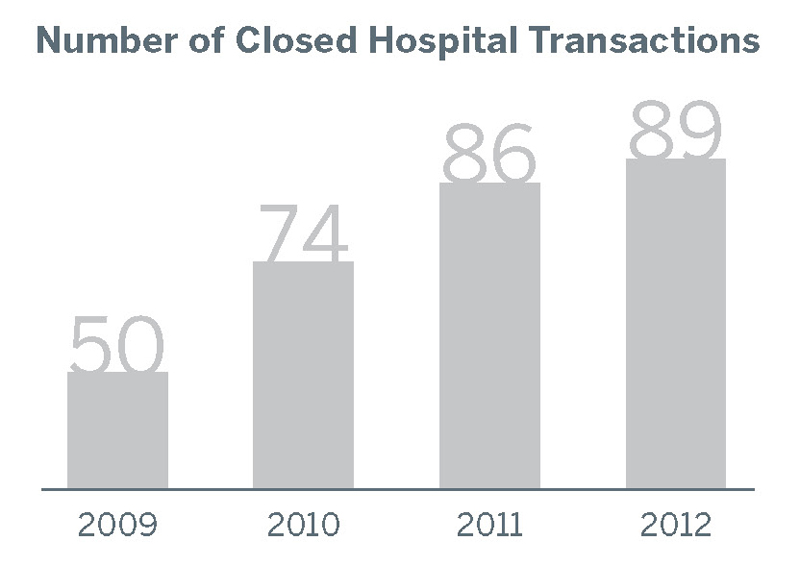Auto logout in seconds.
Continue LogoutThis interview with Steven Corwin, CEO of New York-Presbyterian, was conducted by Eric Larsen, managing partner, and Brad Rose, managing principal, and condensed by Amanda Wolfe, senior director.
Question: Steve, I’d like to start off by asking you about the culture here at New York-Presbyterian. This organization has such a storied history, with a fascinating mixture of heterogeneous parts comprising the whole. I find that organizations with tightly integrated cultures have one or two deeply animating principles. You're on record describing how everything at NYP is organized around the patient. Can you talk about that, and especially what being 'patient centered' means in this day and age?
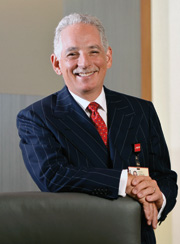
Steven Corwin: Ultimately, all of this—from the financial perspective, or the how big you get perspective, or what you're investing in perspective—doesn't mean anything unless it translates to what's right for the patient.
I've told people this many times: If someone can't get excited about our mission, then maybe they're the wrong person for the position. Who wouldn't be excited about taking care of patients, taking care of families, making sure that they do the very best they possibly could do?
We're a not-for-profit corporation; we exist for the public good. The animating principle has to be: put the patient first. If you don't do that, then I think you lose your way.
Q: You started your career as a cardiologist, and I've read quotes of yours in which you mention very much missing those 'one-on-one moments' with patients. How does your physician background influence your role now, overseeing a system with 30,000 employees?
Corwin: It's about me being able to translate to our employees what it's like to take care of someone at 2 a.m., who's about to die unless you do something.
My first week in practice I took care of a guy who, long story short, was having an acute myocardial infarction, needed an intra-aortic balloon pump, and got an emergency operation. This was over the Fourth of July weekend, my first weekend as an attending cardiologist, and I was covering for a more senior physician. The family was skeptical of me, because I was a young attending. The patient did well, and I followed him for the next 15 or 16 years while I was in practice. He sent me gifts upon the birth of my children. We learned a lot about each other.
I tell that story because that's the interaction that you get. I was meaningful in his life, he became meaningful in mine, and we learned about each other. You don't get that sitting around this table, but patient care grounds you in terms of what this whole thing is about.
Q: Building on this theme of culture, I'd love to get your insight into the story of how New York-Presbyterian formed. How were you able to stitch together a cohesive system?
Corwin: Without question, it was a tremendously far-sighted move for both Dr. William Speck and Dr. David Skinner to say that the merger between Columbia Presbyterian Medical Center and New York Hospital should happen.
Although the two medical schools—Columbia University and Weill Cornell—were superficially quite different, the systems' values were the same: being great academic centers, providing great patient care, teaching, and research. The schools benefited by the fact that we're in a large market. They weren't tripping over each other. And we made the decision to keep the doctors where they were; we weren't going to try to scramble it.
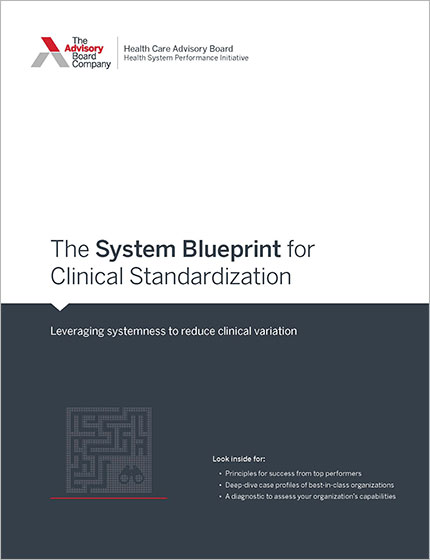
Merging? How to achieve system-wide consistent care
As chief medical officer at the time, I decided to structure the service lines over the departments and include the department chairs. It was a little clunky—in the cardiac service line, for instance, you'd have the two chairs of cardiac surgery, and the two cardiology chiefs—but it didn't marginalize the leadership at either place.
The fact that the board made it a full-asset merger was critically important. Another important factor was that there was a single board, not to mention the quality of the board members.
One of the minor things at the time that turned out to be a major thing was that the two hospitals became united under a single Medicare provider number. A single Medicare provider number mandated a single Joint Commission survey, and so whether they wanted to or not, the two places had to cooperate.
Market economics
Q: New York is such a fascinating and competitive market. There aren't too many other geographies with an equivalent number of shifting alliances and acquisitions. Plus Northwell, Montefiore, and Mount Sinai are all moving, to various degrees, toward provider-sponsored health plans. What's your perspective on all of this activity in New York?
Corwin: I'm not a big believer in becoming a health plan. You need real scale, and in this environment, you probably need over 400,000 or 500,000 lives. At the same time, there are a lot of insurers in this marketplace.
Our goal is to be the leading academic health system in the country. I don't view a regional health network as being a hub and spoke. I view it as being hub and hub. Now, the big hub may be here, but there are things that you're going to do in the community. For example, cancer is a distributed service. Obstetrics is a distributed service. Pediatrics, in some ways, is regionalized, but you need to provide pediatric care at some of these sites. Brooklyn is a borough of 3 million people. New York-Presbyterian Methodist is one of our hospitals that we will become an active parent of.
Q: You bring up a good point—one of the big shifts in the market is this notion of 'active parenthood.' It's a unique concept in New York. Can you shed some light on how you choose active parenthood instead of sponsorship or affiliation?
Corwin: When I took over as CEO four years ago, it was clear that the industry was going to consolidate. It was also pretty clear to me within the first year or so that the passive model was not going to work for a few reasons. Number one, I couldn't necessarily stand behind quality if hospitals were being run independently. Number two, the ability for me to leverage the two medical schools was limited. And number three, my philosophy is you're much better off owning it than pretending to own it. I felt that developing a regional health network was important.
New York-Presbyterian is the overall brand, and then there is New York-Presbyterian Hospital, and then there are New York-Presbyterian regional hospitals. They have to be good in and of themselves, so that's what I mean by hub and hub, not that we're going to recreate an academic center or significantly alter the cost structure with those facilities.
I'm a firm believer that we've got great services, and that no matter what happens in health care, people will want to come to us. I think that we can cut down on the number of procedures, cut down on the number of admissions. But you can't do that unless you own these places. And so we've shifted to being the active parent. We'll choose who's going to be in our regional network, but we want to have broad geographic span, and we want to make sure that each is a 'hub' in their own right and that the community looks to that place.
Q: How do you approach the challenges of creating a regional structure in an active parent model, where you're accountable for quality, as well as running and preserving the uniqueness of some of those markets?
Corwin: I really believe that there has to be a New York-Presbyterian culture, a New York-Presbyterian way. We spend a lot of time saying, we put the patient first, and this is what it means to be part of NYP. I could not do this unless people really felt that, and I think they do.
I think it starts with, what's the culture that we want? And then, how do we export that culture? You've got to have people who get it. Then the question is, can we be the pipeline for developing talent for our regional hospitals? There's great talent at the regional hospitals, but it's got to fit in with how we think of culture. And part of that culture is you are part of us. We made the decision to call each of these hospitals New York-Presbyterian, so New York-Presbyterian Queens, New York-Presbyterian Methodist. It's a two-way street. We're going to treat you like you are family, and you've got to treat us as if we're part of the family, not just some sort of remote parent.
Engaging patients
Q: A small handful, maybe one-third, of academic medical centers nationally are thriving, either because of some historical advantages or because an intentional strategy is paying off. Too many other AMCs, however, are struggling. From your perspective, Steve—not only running NYP but also serving on the board of the Association of American Medical Colleges—what's the prognosis for AMCs?
Corwin: I think AMCs are critical to the health of this country. But at the same time, I think that AMCs have to reinvent themselves to fit the modern profile, which is going to be extending yourself before the hospitalization and extending yourself after the hospitalization, beyond the four walls of the AMC.
Academic medical centers should be part of the solution, not part of the problem. I think some have thought, because of their cost structure, that they are part of the problem, and I don't buy that. You know, labor expense in an AMC is much higher than it is in a community hospital because they're offering things that those community hospitals can't offer. I've told our people, 'We can't be a museum piece relying on a federal appropriation.'
Power your population health strategy
Q: On the theme of extending beyond the four walls of the hospital, I was struck by your Regional Health Collaborative in Washington Heights and Inwood. And if my memory is correct, you focus on chronic diseases like diabetes, COPD, and heart failure, and you were able to reduce ED visits by 20 percent. Can you tell us more about how this effort came about?
Corwin: In 2007-2008, it became pretty apparent to me that, when we looked at the community health parameters in Washington Heights, despite a children's hospital, emergency rooms, ambulatory clinics, and a great adult hospital, health statistics were lagging. Why is that, with all these resources available? We decided that we had to engage the community more, as well as identify the people with serious health conditions where interventions could make an impact. The only way these things are scalable is to identify the most at-risk patients. Now, underneath that, you've got to put in place a whole range of things that start to yield information around social determinants of health, how can you potentially intervene on that, and how can you advocate for that.
Final reflections
Q: Steve, you've had a pretty exceptional career in a pretty exceptional place. I'd just be curious, what are you most grateful for?
Corwin: My family. I think that I married a great woman, and I have great kids. Am I grateful for the fact that I get respect and admiration, and I've accomplished things in my professional life? Of course. It's very gratifying to feel that you've succeeded professionally, but if I didn't have my family, I don't think I'd be where I am.
Get more lessons from the C-suite
See the Daily Briefing's archive of must-read interviews with other top hospital and health system leaders, including:
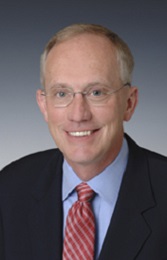 OhioHealth's CEO almost always says 'no' to expanding. Here's when he says 'yes.'
OhioHealth's CEO almost always says 'no' to expanding. Here's when he says 'yes.'
OhioHealth CEO David Blom discusses why he thinks the end of life should be celebrated like the beginning, how his system is approaching clinical standardization, and what he wishes he'd learned earlier in his career. Read our interview with David.
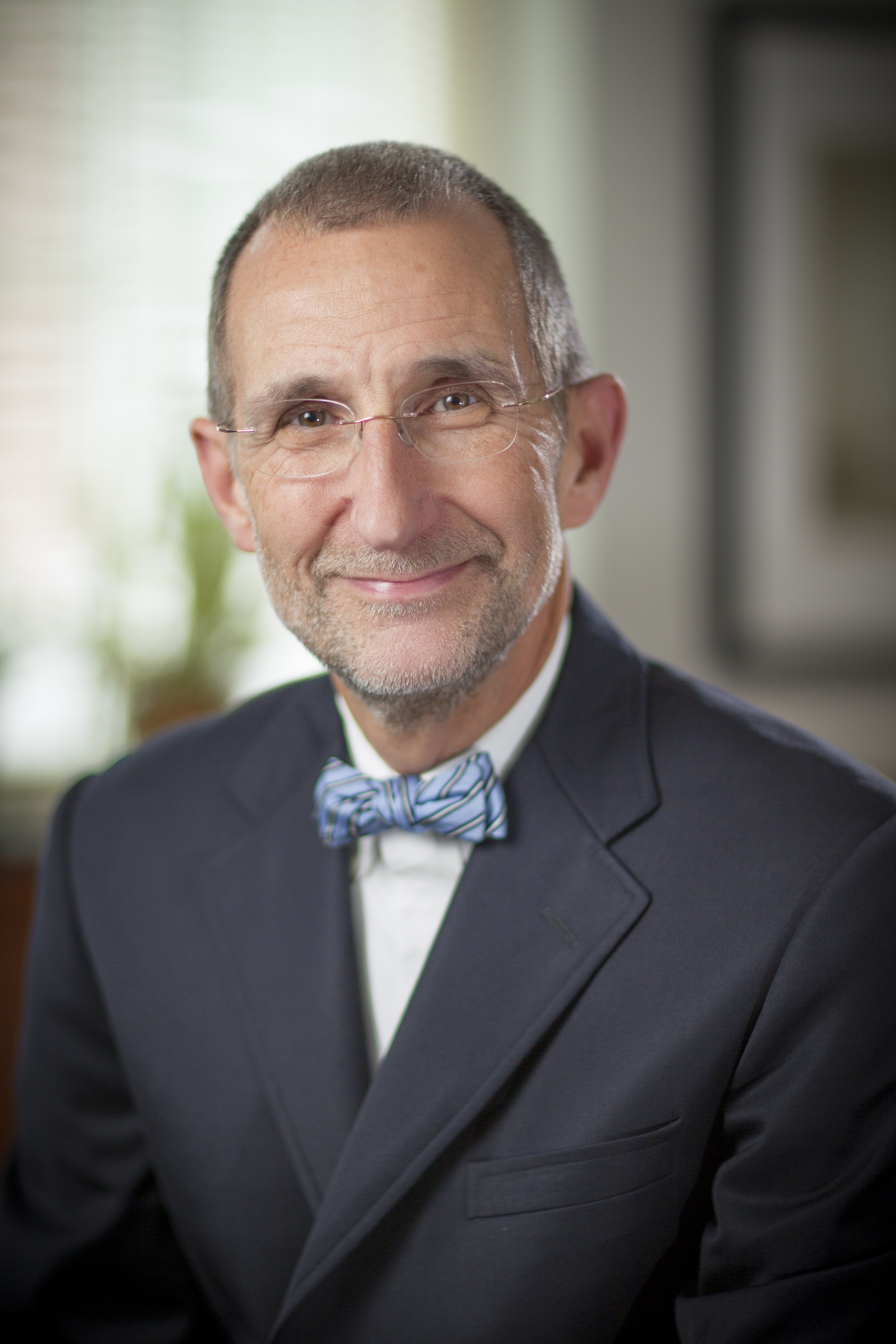 Some CEOs talk about 'my team.' Here's why UNC Health Care's CEO won't
Some CEOs talk about 'my team.' Here's why UNC Health Care's CEO won't
William Roper, CEO of UNC Health Care, talks about the state of academic medical centers, assuming more downside risk, and his favorite quote from President Ronald Reagan. Read our interview with William.
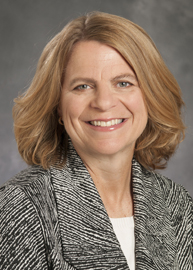 They told her she was 'too empathetic' of a leader. Now Penny Wheeler runs a 13-hospital, $3.5 billion system.
They told her she was 'too empathetic' of a leader. Now Penny Wheeler runs a 13-hospital, $3.5 billion system.
Allina Health's president and CEO talks about her system's plan to "disrupt the market," why she wishes Allina still had its health plan, and more. Read our interview with Penny.
Don't miss out on the latest Advisory Board insights
Create your free account to access 1 resource, including the latest research and webinars.
Want access without creating an account?
You have 1 free members-only resource remaining this month.
1 free members-only resources remaining
1 free members-only resources remaining
You've reached your limit of free insights
Become a member to access all of Advisory Board's resources, events, and experts
Never miss out on the latest innovative health care content tailored to you.
Benefits include:
You've reached your limit of free insights
Become a member to access all of Advisory Board's resources, events, and experts
Never miss out on the latest innovative health care content tailored to you.
Benefits include:
This content is available through your Curated Research partnership with Advisory Board. Click on ‘view this resource’ to read the full piece
Email ask@advisory.com to learn more
Click on ‘Become a Member’ to learn about the benefits of a Full-Access partnership with Advisory Board
Never miss out on the latest innovative health care content tailored to you.
Benefits Include:
This is for members only. Learn more.
Click on ‘Become a Member’ to learn about the benefits of a Full-Access partnership with Advisory Board
Never miss out on the latest innovative health care content tailored to you.
